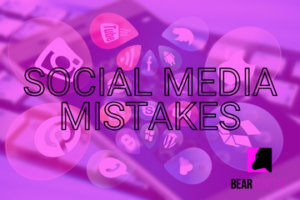In business, it is often said that turnover is vanity while profit is sanity. The same applies to social media success.
Getting likes, comments and shares on a social media post is nice, but it’s mostly vanity compared to the metric that matters – customers.
In this blog post, why do we need to stop trying to keep up with the Kardashians and, instead, get our digital content doing the right job?
Your competition
What’s the most-liked photo on Instagram?
Surprisingly, it’s not a scantily-clad reality TV star but a simple photograph of an egg.
Posted back in 2019, the photo was shared by the account world_record_egg with a request to help set the world record for ‘most-liked post on Instagram’.
Account holder Chris Godfrey succeeded in this aim, knocking Kylie Jenner off the top spot and accumulating (to date) a whopping 56 million likes. #EggGang
Changing mindset
The most-liked Instagram post is an excellent reminder that social media engagement can have little to do with the quality of the content.
You can spend considerable time and money crafting a beautiful Instagram post to be met with tumbleweed in response.
But, in a world where we’re taught fame and attention are everything, how can we change our mindset to move away from this culture of ‘likes’.
When we review the analytics for podcast downloads or video views with our clients, I’ll often encourage them to picture that many people in a room.
Imagine you’re a public speaker and your download figures are your audience.
Speaking to a room of a few hundred people is worthwhile for a business owner.
You’ve made the big time when you speak to an audience numbering 1,000 or more.
Social media allows us to reach an audience at scale. In reality, our small businesses rarely need (or could handle!) that many customers.
Measure what matters
The metric that matters in digital marketing is customers.
It’s nice to be ‘liked’ when sharing a photo, blog or video on social media. It’s far more important that someone picks up the phone, sends you an email, or purchases in your store (online or bricks and mortar).
There are all sorts of reasons why some social media posts explode with engagement, and others sit quietly, attracting little visible attention at all.
The algorithms used by the various social media platforms typically reward a particular type of content and its interaction.
These social media platform algorithms are all private, so take with a pinch of salt anyone who claims to ‘know’ how they work.
But, in general terms, platforms will show their users relatable, relevant and timely content.
In most cases, the platforms present your new post to a subset of your followers to see how they react to that content in the first few hours before deciding (automatically) whether it is worthy of being shown to a larger audience.
Multiple platforms
For this reason, we should never assume an organic social media post is seen by more than a small percentage of your audience.
If you’re wary about sharing too much content on the social media platforms you use, don’t be! Chances are, even if you share the same content multiple times, not all of your followers will see it.
Increasingly, our target customers are becoming more selective about their use of social media, selecting platforms based on personal opinions or past relationships with others who ‘hang out’ in those places.
We know there is a demographic factor in platform selection, but presenting your content across multiple platforms is an essential step toward improving visibility.
Even then, it would be wrong to assume that being on every platform ensures every prospective customer sees you.
Set your sights
When setting your goals for social media engagement, keep the prize of customer acquisition set firmly in your sights.
You can even go a step further, at least on Instagram, and select the option (in settings, privacy) to hide the like count on posts.
Choose this option, and, instead of the default numerical value you would usually see underneath a photo, it simply names a few users and adds “and others”.
You can hide the likes on your posts by clicking on the three dots above each post and selecting ‘hide like count’.
The platform initially introduced this option to “depressurize people’s experience” on Instagram. In other words, it’s probably good for you to stop fixating on ‘likes’ on social media.
Don’t focus on likes. Instead, work towards creating and sharing quality content that genuinely engages your audience, builds trust, drives traffic and generates leads.



